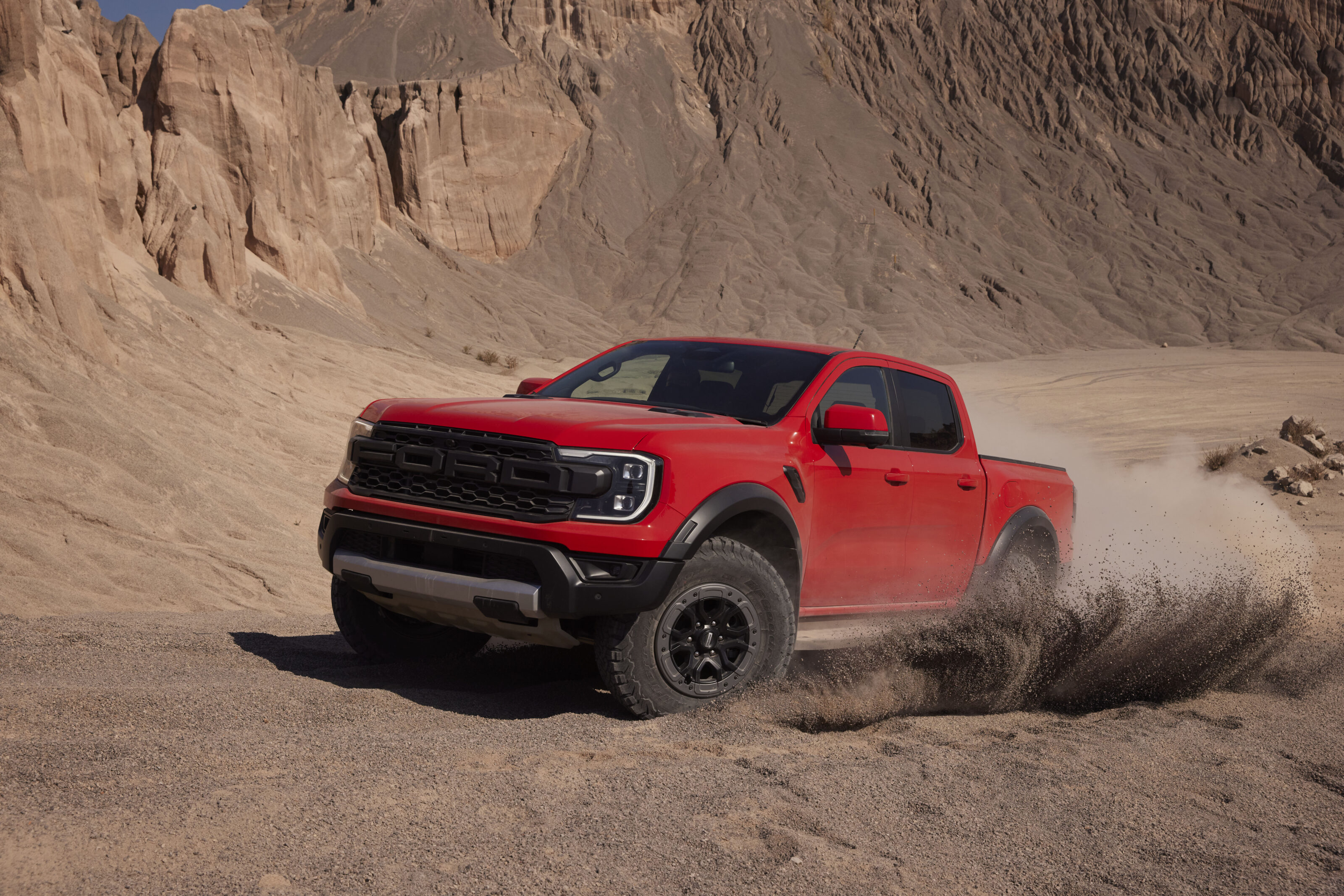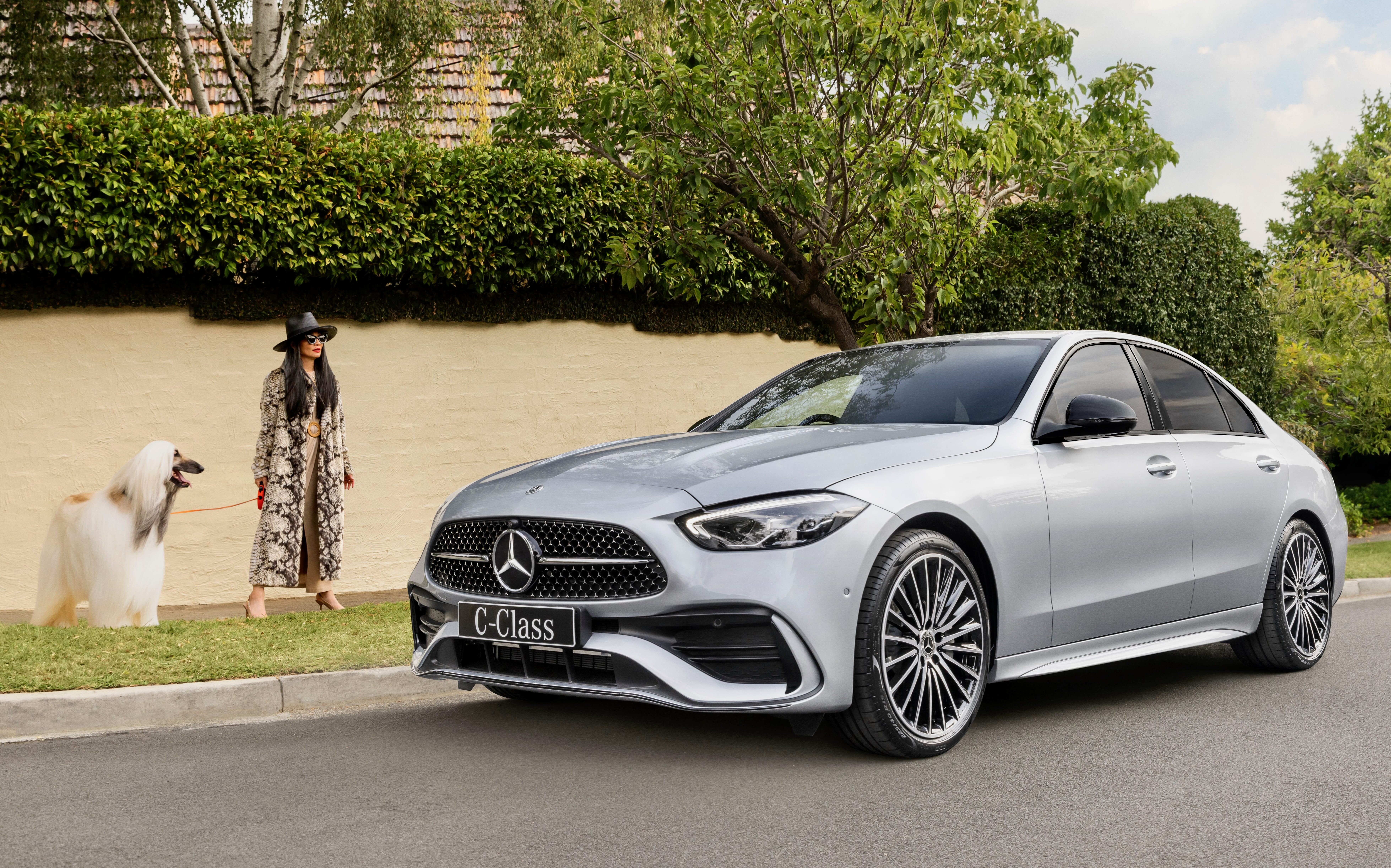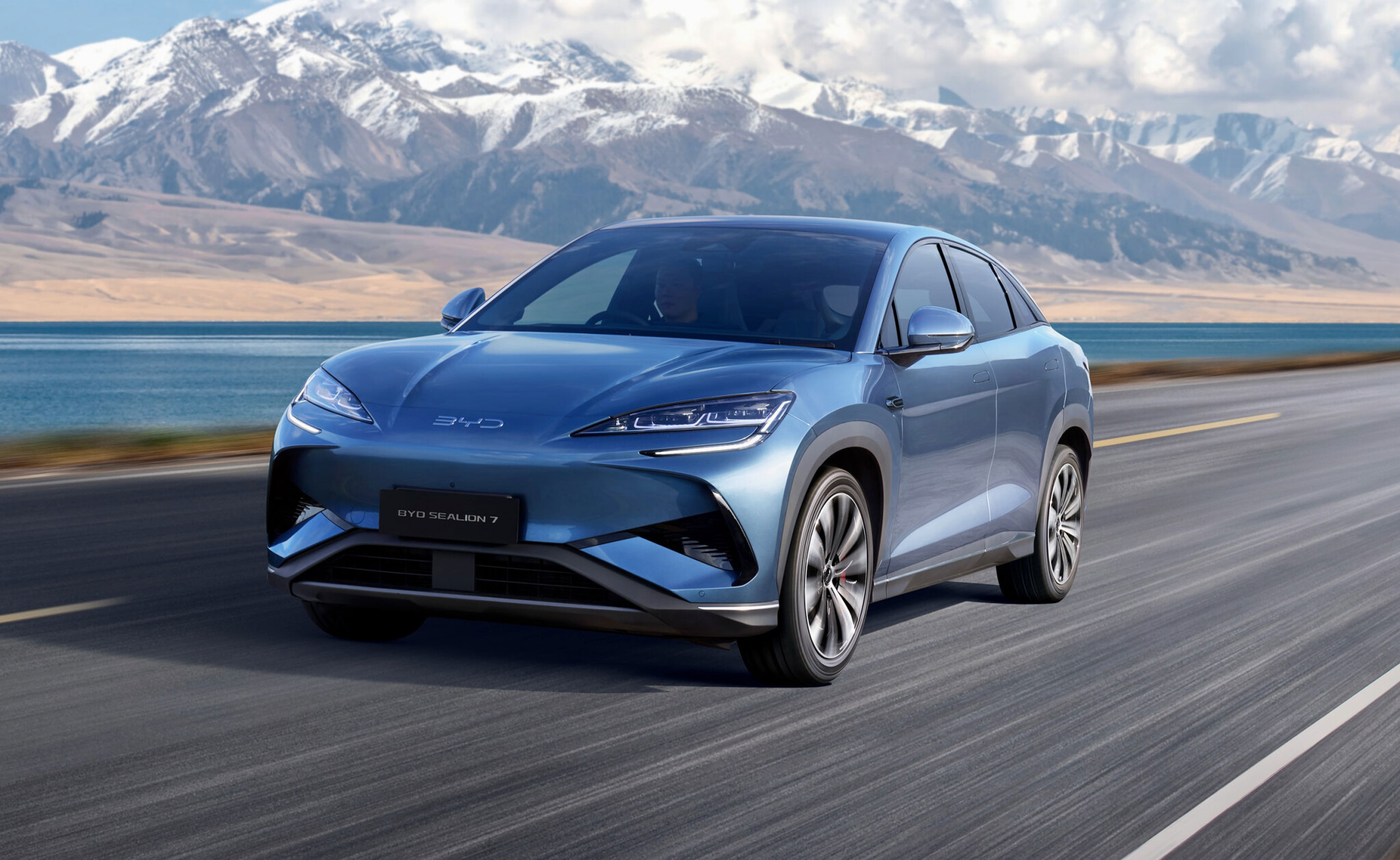2022 Ford Ranger Raptor revealed: Ford has revealed full details of its all-new second-generation Ranger Raptor and the headline numbers are huge: 292kW/583Nm from a 3.0-litre twin-turbo V6 petrol, a 0-100km/h time slashed by four seconds, next-gen chassis tech and a switchable exhaust that you can hear from more than half a kilometre away.
A bold exterior design and much-improved cabin complete the update that Ford says has totally transformed the popular performance dual-cab.
“It’s a quantum shift, I’ll tell you that,” Justin Capicchiano, Ford Performance program manager told Wheels. “The step change is huge; it’s a different thing altogether. You guys aren’t ready for it.”
UPDATE, May 12 2022: As the new 2023 Ford Ranger nears its local launch, we’ve now driven a prototype. Get the full story and video at the link below!
The story to here
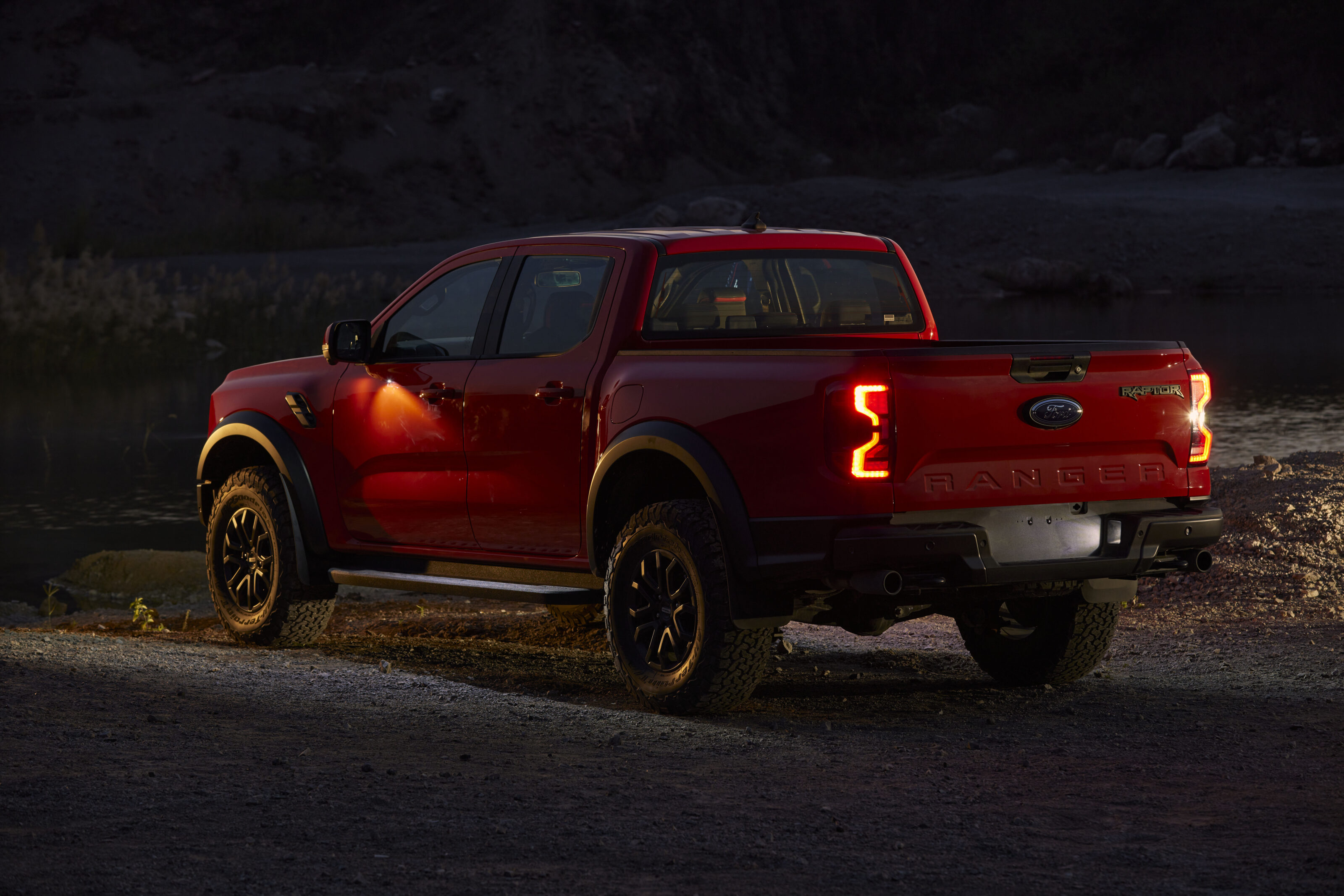
2022 Ford Ranger Raptor engine: 3.0-litre twin-turbo petrol V6
The biggest change, and the one that will most obviously alter the Raptor’s personality and performance, is its engine. Gone is the controversial (and arguably underpowered) 2.0-litre twin-turbo diesel of the first-gen Raptor.
In its place slots the same 3.0-litre Ecoboost twin-turbo V6 petrol as found in the recently released Bronco Raptor, with which the new Ranger shares its T6 architecture. Power and torque have both increased sharply to 292kW at 5500rpm and 583Nm at 3000rpm. That means power is almost double the original Raptor’s 157kW, but if you need some context to better understand just what a performance leap the new engine delivers:
“It’s like night and day,” says Capicchiano. “The current car used to be 0-100km/h in 10.6 seconds. Now it’s close to 4.0sec faster. It’s about as fast as a Focus ST to 100km/h and it’ll do it on dirt.”
Customer feedback drove the switch from diesel to petrol power, with Ford insiders acknowledging Australia is a ‘power hungry’ market. A bored and stroked version of Ford’s 2.7-litre twin-turbo ‘Ecoboost nano’ V6, the Raptor’s new engine is built around a graphite-iron block and includes an anti-lag system which can hold the throttle open for up to 3.0 seconds after the driver has backed off to reduce lag and improve response.
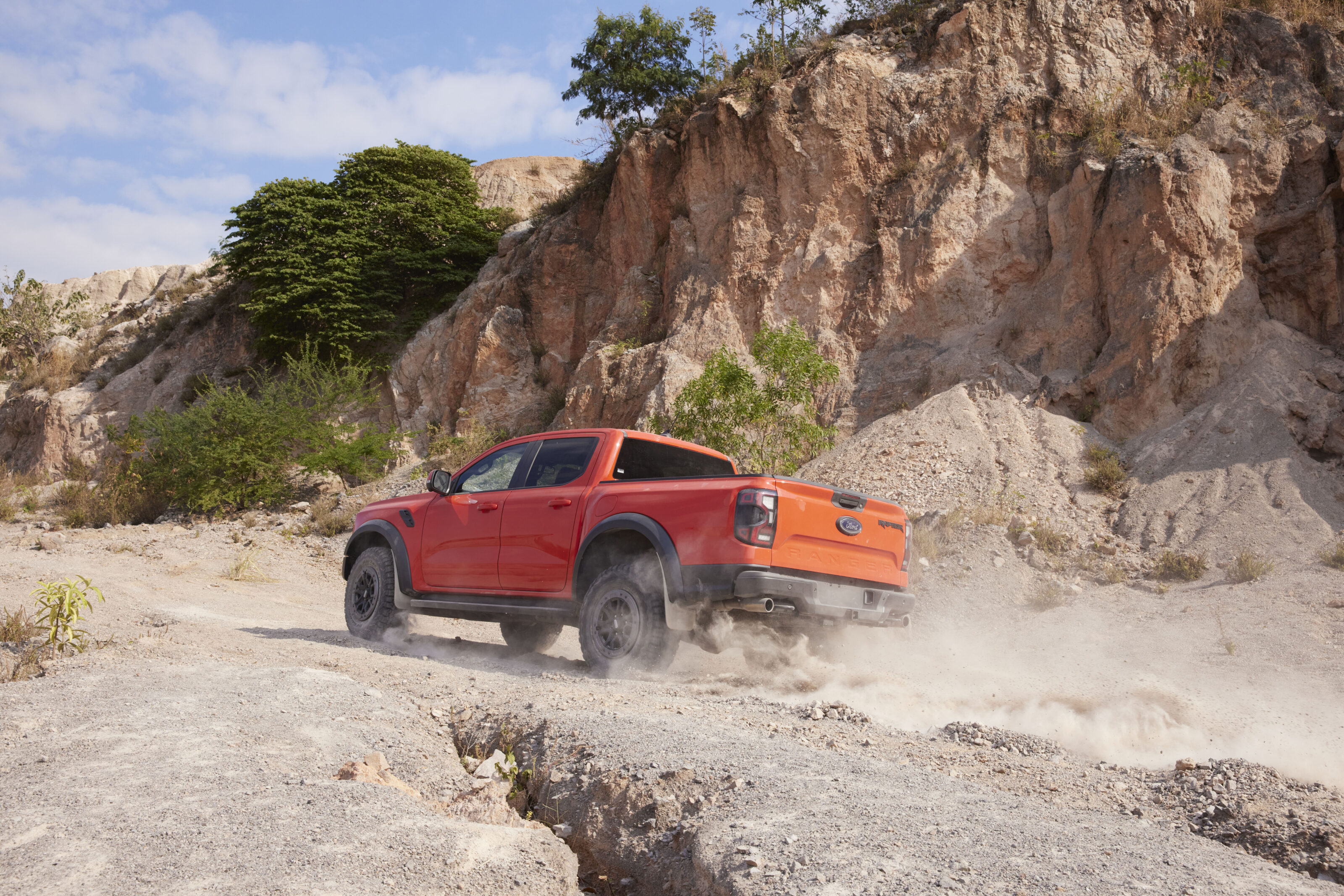
On the outside the imposing Raptor retains its signature F-O-R-D grille, blistered arches and pumped-up guards, although the visual difference with the regular Ranger has diminished a little due to the new donor ute’s larger dimensions.
“Track width is the same as the current Raptor and the width of the entire car is the same as well,” says Capicchiano. “But the new Ranger has grown by 50mm, so the gap has closed. We couldn’t go any wider with Raptor because it’s the widest car we can fit down the production line in Thailand.”
The old ute’s composite panels are gone, too, with conventional steel now the material of choice for the front quarter panels and bonnet (total kerb weight has crept up a little compared with the first-ten Raptor), although the latter now sports functional vents.
“That has no impact on weight because the composite wasn’t a lightweight material, it was malleable which allowed us to get around the headlight shape,” explains Capicchiano. “But with the new headlamp design, we could go back to a more traditional material in that area.
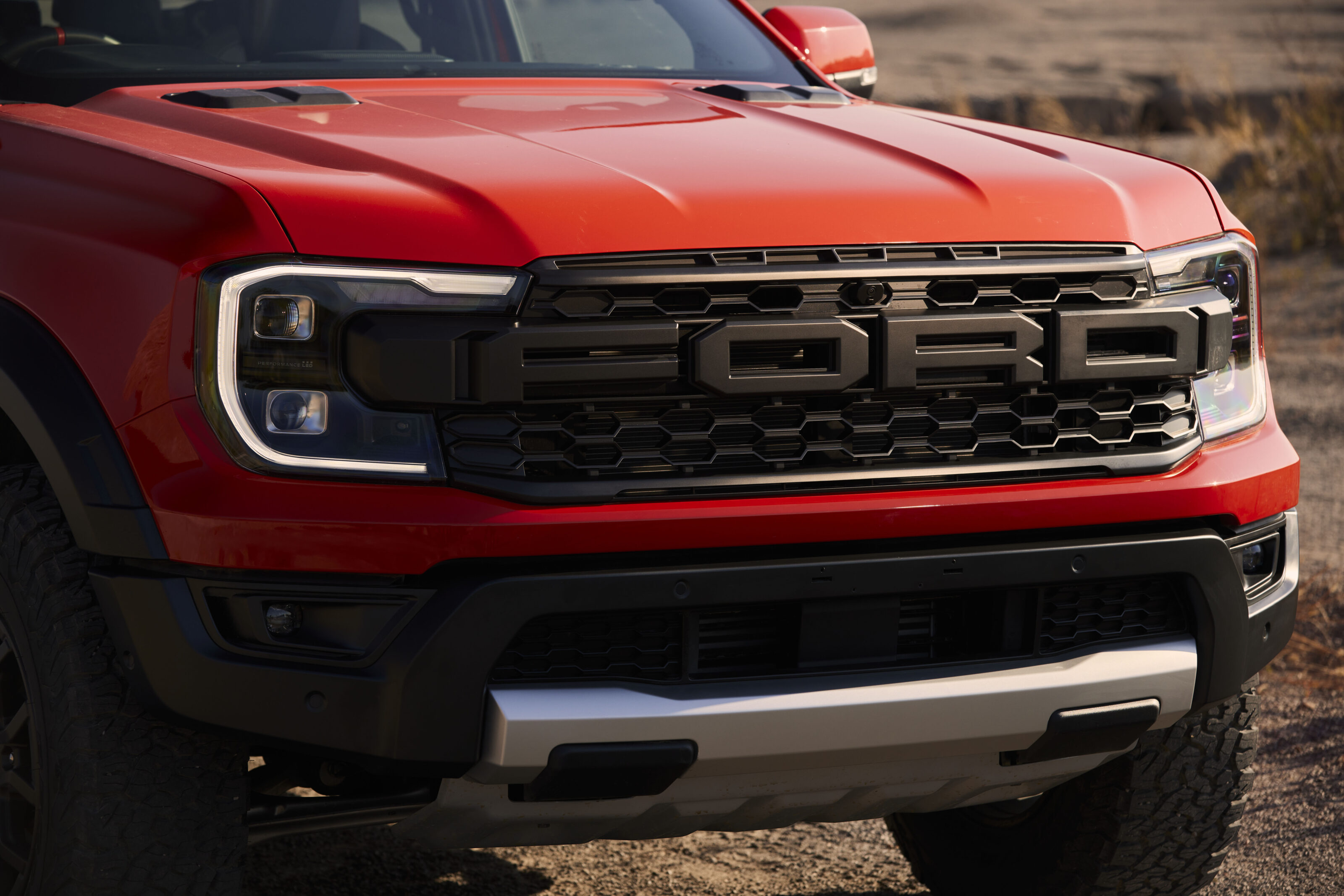
LED lights feature front and rear, with the headlights including Matrix technology which can mask out oncoming traffic to avoid dazzling other drivers.
Two alloy designs are available for the 17-inch wheels, including one with beadlock capability which helps prevent the tyre from rolling off the rim when pressures are dropped to tackle off-road terrain. The tyre spec itself is unchanged from the previous Raptor with BF Goodrich all-terrain K02 tyres fitted as standard in Australia.
A new electronically controlled active exhaust will ensure the Raptor has the soundtrack to match its tough exterior. Adjustable through four modes (Quiet, Normal, Sport and Baja), the 2.5-inch exhaust system exits through twin 65mm anodised tips and can even bypass the mufflers to behave as “a full straight-through exhaust” in Baja mode. The result is a ute that can be heard from more than half a kilometre away, according to Ford.
“It’s loud; Baja is right on the legal limit for decibels,” says Capicchiano.
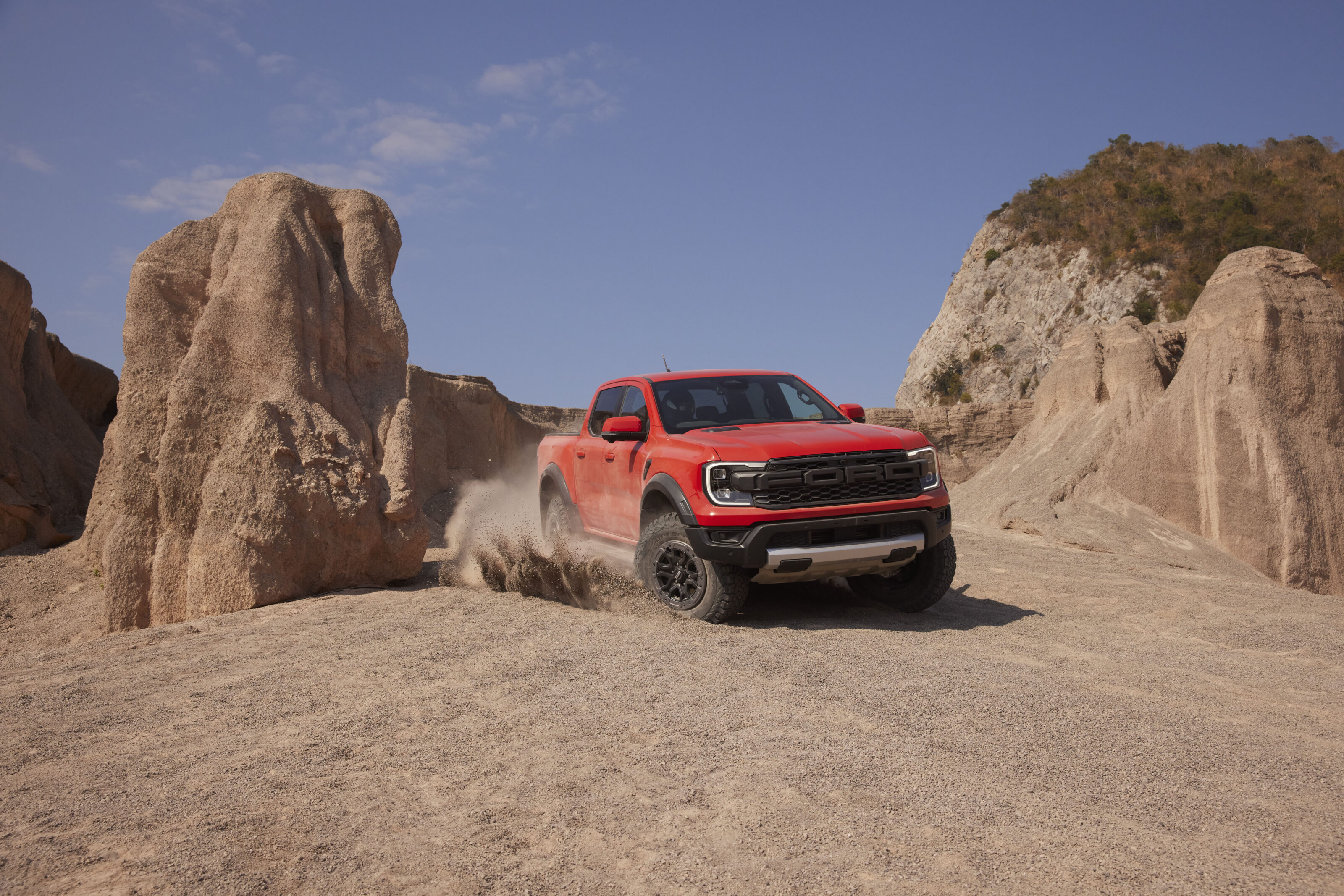
Paired with a new 10-speed automatic, which features some clever software that gives each ratio its own boost profile, the new Raptor’s T6 platform also allowed an upgrade to a full-time all-wheel drive system with an electronic two-speed transfer case and locking differentials front and rear.
This means the new Raptor now defaults to 4-Auto rather than 2-High, with the system’s tune-ability opening a new dynamic window for Ford’s engineers to play with. Combine that with a suspension set-up built around next-gen, semi-adjustable shocks from US supplier Fox, and Ford’s engineers say the new Raptor is a different animal entirely to drive quickly.
“People might see the chassis as an evolutionary change but it’s a generational shift in relation to performance,” says Capicchiano. “It’s significantly improved the amount of speed we can carry in this car. I’ll give you an example: our off-road testing circuit is a 10km loop. Around that 10km we are 10 seconds faster than the previous truck. That’s a second per kilometre. And both were being driven flat-out.”
A punishing off-road testing regime was core to the Raptor’s development. As well as Ford’s usual durability tests, the Raptor was subjected to an additional 1000km ‘race simulation’ around off-road tracks near Alice Springs. Peter Spence, vehicle engineering manager for Raptor, says the new ute dealt with the punishing schedule so easily that they threw a few hundred extra kilometres at it just for fun.
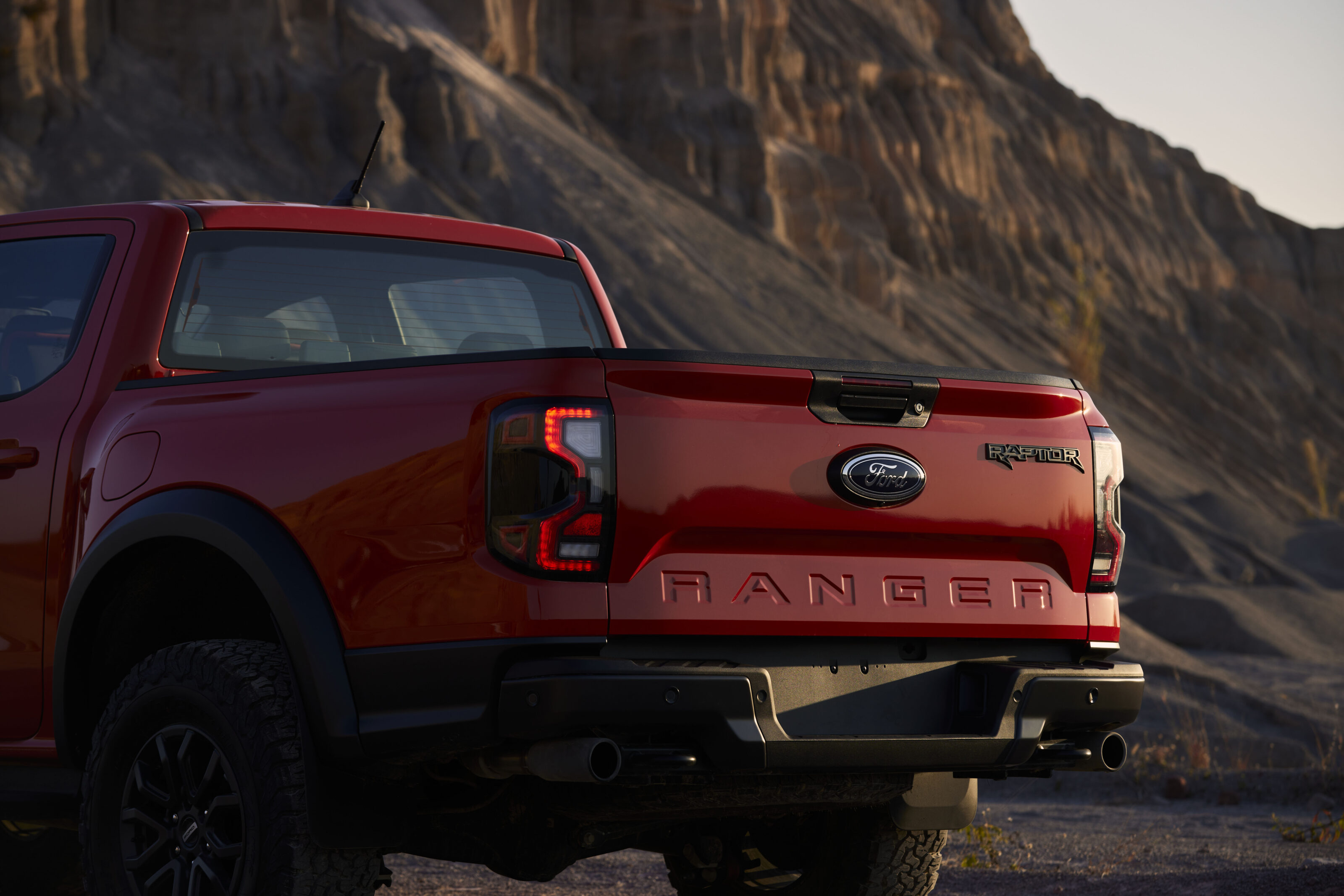
“We’re blasting through the desert at ludicrous speed as fast as we can to simulate the Baja race in the US,” he tells Wheels. “And we try to break things, basically. But we came through the test with so little damage, even though the speeds were much higher and the power levels are much greater. So everything was more challenging for the car yet it performed better than the previous Raptor.”
Additional body bracing and a greater use of high-strength components help the Raptor cope with the punishment, as does a 23mm steel front bash plate which helps to protect key components like the radiator, sump, differential and steering hardware.
It wasn’t all smooth sailing, of course. Isolating and removing rattles in the exhaust system were key challenges, as was overcoming packaging issues with the V6’s air intake. Parts of the system were collapsing unexpectedly which led to the turbos overspeeding and failing. “That was really tricky to diagnose,” says Spence.
Making improvements to limit handling was a key focus this time around, and the Raptor’s move to electronically controlled dampers allowed greater scope for tune-ability. Built around a double-wishbone front and Watt’s link rear suspension set-up, the new Fox 2.5-inch ‘Live Valve’ system utilises conventional coilovers up front but features shocks with external reservoirs at the rear.
The shocks are able to control the amount of damping force needed during compression (but not rebound) and drivers can adjust damper stiffness by cycling through the Raptor’s seven drive modes (Normal, Sport, Slippery, Rock Crawl, Sand, Mud/Rut, Baja).
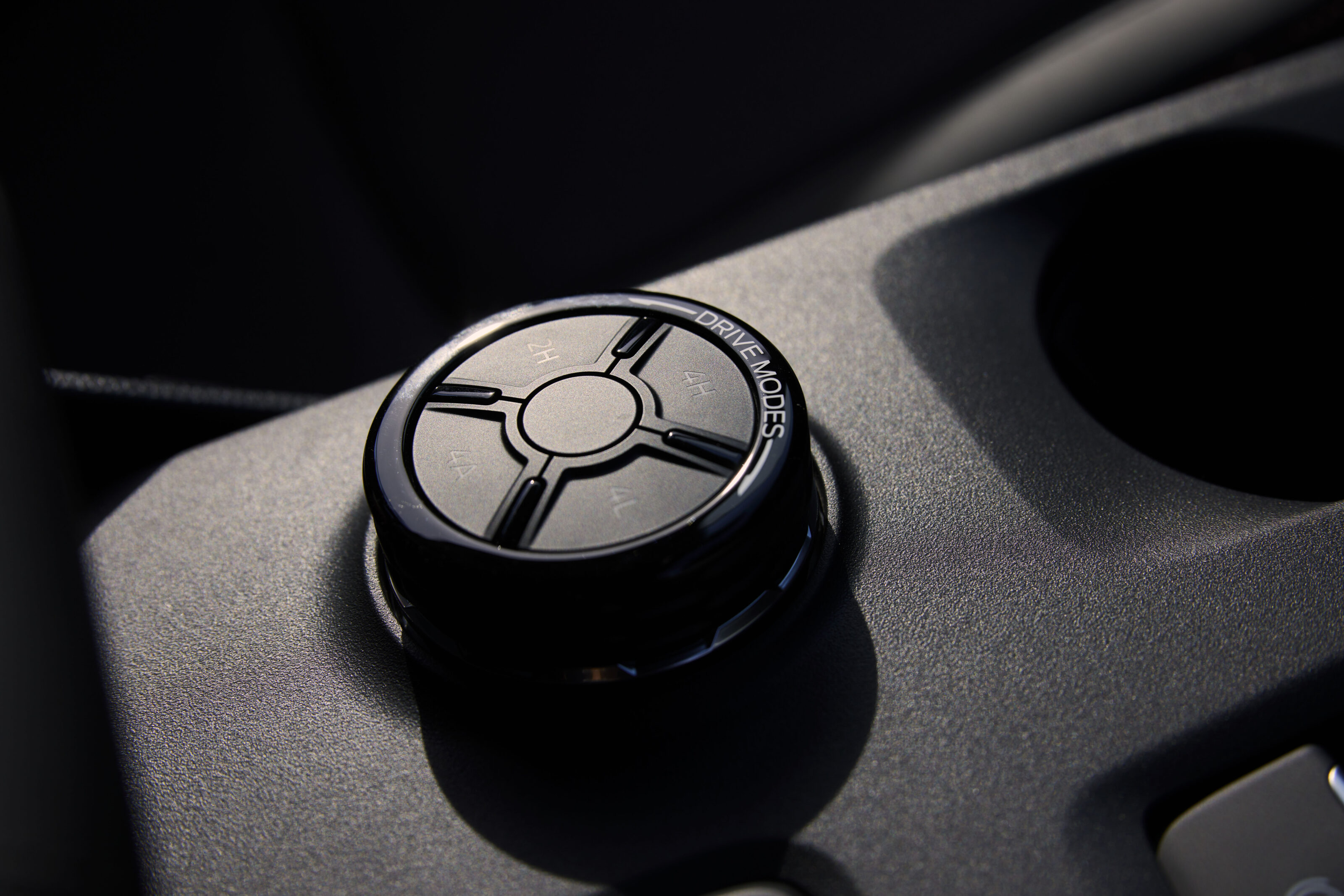
Ford has also added a specific damper mode labelled ‘Loud Pedal’, which is designed to limit squat under hard acceleration. The shocks themselves are filled with Teflon-infused oil that Ford says reduces friction by 50 percent compared with the previous Raptor.
A further gain in performance was found in the braking system which has moved to an electronically controlled brake booster. While the hardware is largely unchanged in terms of disc and pad size, Capicchiano says huge improvements were found by tuning the system’s software.
“It’s disc brakes all round and threshold braking limits have increased,” he says. “The ability to trail brake into corners has improved and the off-road braking element is a completely different thing. We’ve gotten so much out of it compared to the old car.”
If the abundance of different modes for the exhaust, powertrain, steering and suspension sounds daunting, it isn’t meant to. Ford has deliberately given the driver as much scope as possible to tailor the new-gen Raptor to suit their personal preferences.
Owners can also split the modes and individualise them to suit their preferences. So the dampers, powertrain, steering and exhaust can all be adjusted individually.
Core to the Raptor’s development process was the knowledge that different owners use their cars in different ways. Some use their utes mostly in low-range situations, others favour sand driving while others enjoy high-speed runs through forests and deserts.
Creating a vehicle that’s equally capable in every situation and terrain was the focus. Ford also had to consider the fact that unlike the previous Raptor, this generation will play a bigger role as a ‘global model’ that’s sold in Asia Pacific, Europe and for the first time, America.
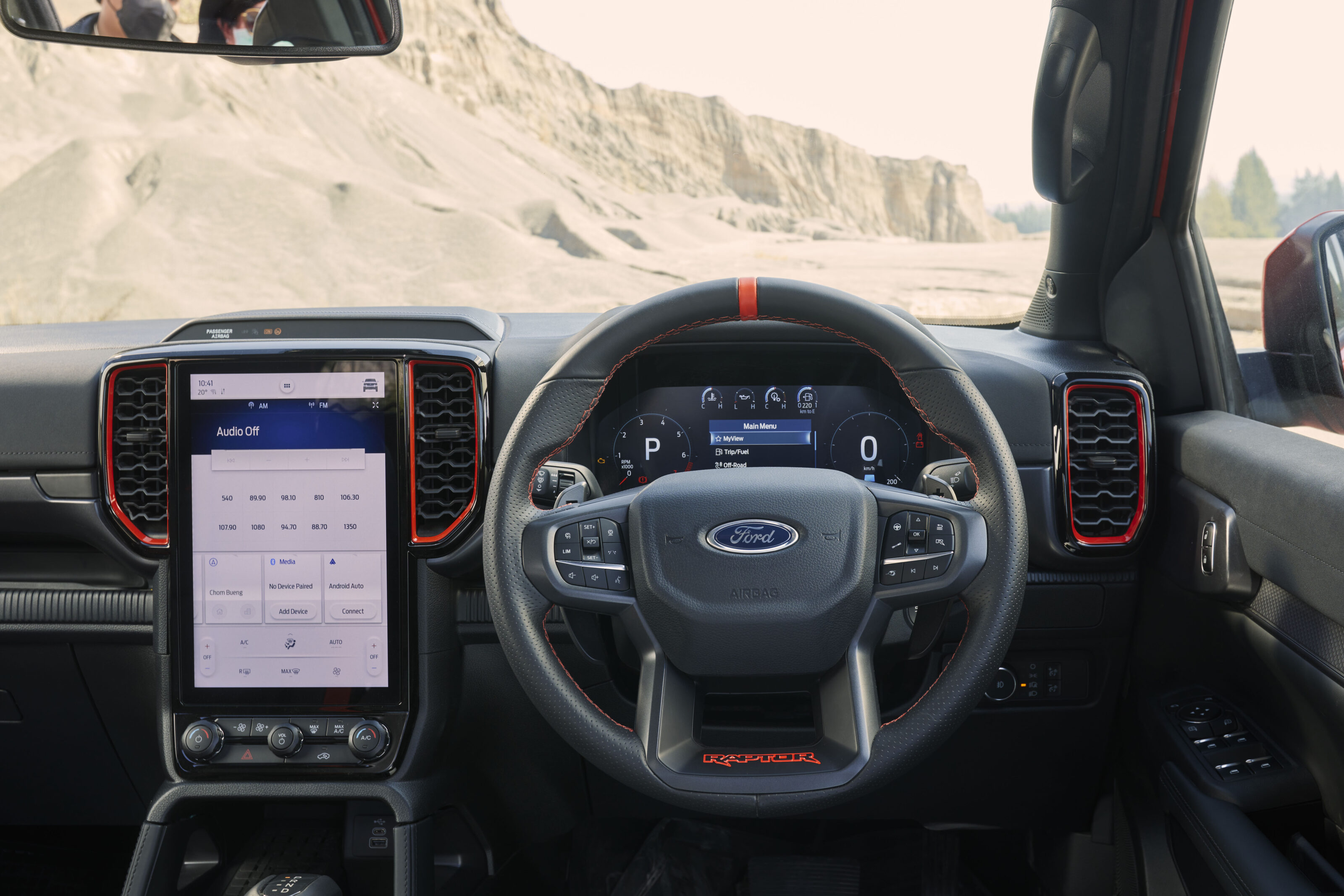
“At the moment we’re aiming for one global chassis tune,” says Spence. “And the chassis character is different this time around. We’ve increased the vehicle’s ability at the extreme end and given up a little bit at the comfort end.”
One area where comfort has been enhanced, however, is inside the cabin. Like the new Ranger on which it’s based, the Raptor’s cabin has taken a significant step forward in equipment and technology.
A ‘fully digital’ cabin includes a 12.4-inch digital instrument cluster and a 12.1-inch portrait central touchscreen that runs Ford’s latest SYNC4 infotainment software. Apple CarPlay and Android Auto are both wireless, while the sound system comes from Bang & Olufsen.
Expect different spec levels in international markets but Aussie cars will be fully loaded, meaning every option and system will be included as standard. Whether that means the new Raptor will demand a higher price compared with the current ute’s circa-$80K remains to be seen, though a price rise is likely. Ford says it hasn’t yet finalised pricing but will release it closer to the Raptor’s on-sale date later in 2022.
As before, special Raptor design touches abound inside including Code Orange inserts for the dash, bolstered sports seats and leather steering wheel. The shift paddles, a key touch point for the driver, are made from cast magnesium.
So it’s faster, louder, significantly more powerful and promises to be even more engaging to drive. And the Raptor’s arrival so early on in the new Ranger’s product cycle has our mouths watering. If this is the starting point, what else might Ford Performance have in store over the next decade?


